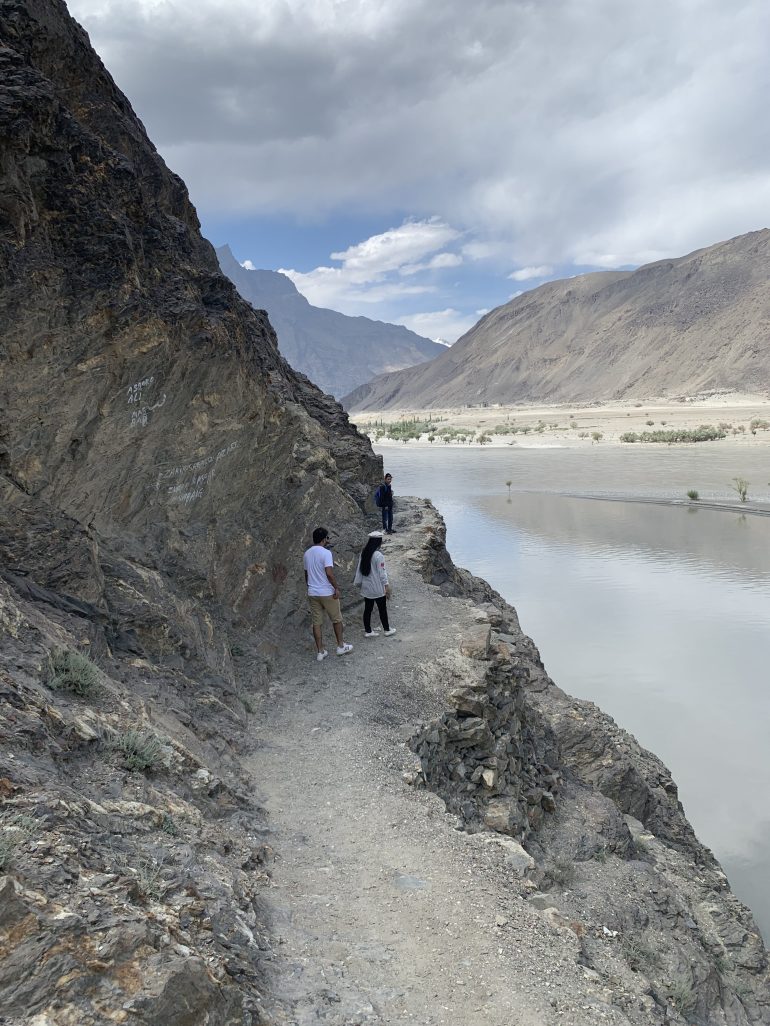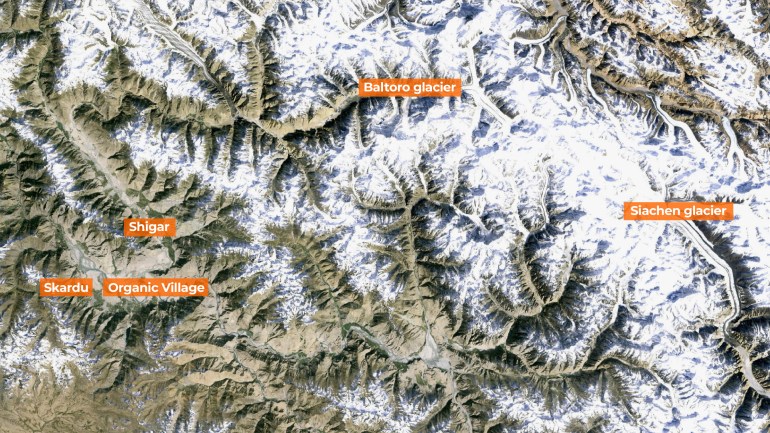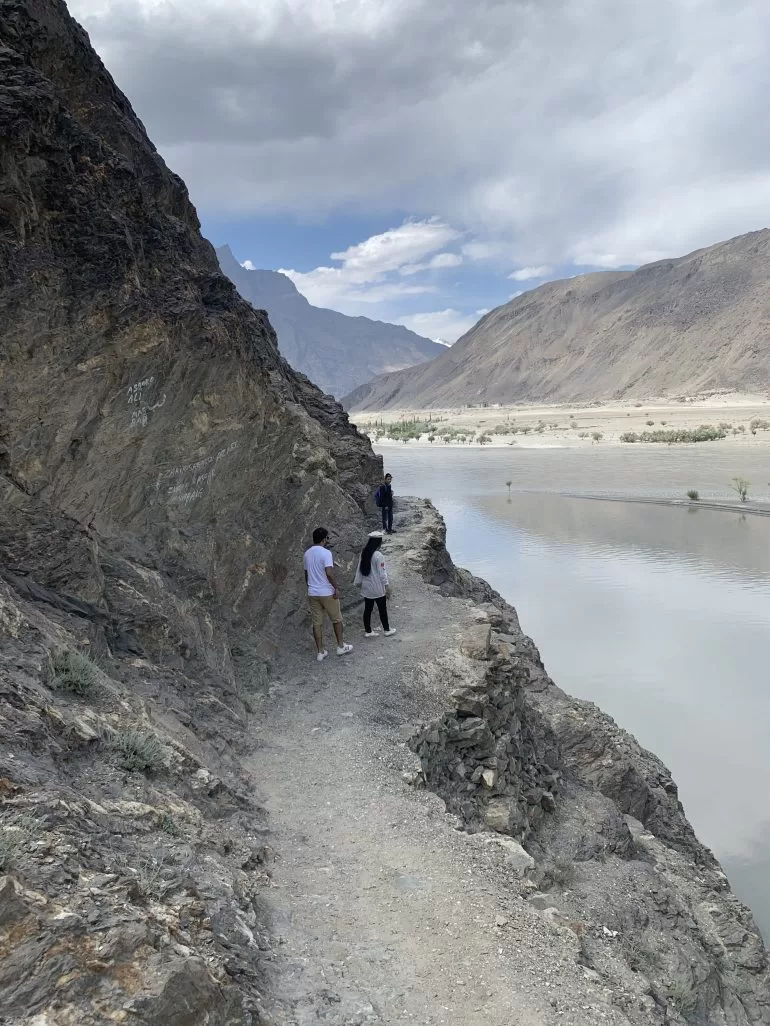The sharp mountain edges stick out threateningly, and I am reminded of the soulful lyrics of Ali Zafar’s Paharon Ki Qasam (Oaths of the Mountains), a tribute to the late Pakistani climbing hero, Muhammad Ali Sadpara from Skardu, who tragically lost his life in February 2021 while climbing the notorious Bottleneck gully which is just 300 metres (984 feet) below the summit of K2.
Above us, the sky is a brilliant shade of blue, adding to the surreal beauty of the landscape. As we gain a wider view of the Indus River Valley below us, our 44-year-old guide, Abbas Jaan, stops and draws our attention to the colour of the water.
“You can see the water turning a murky grey, carrying with it the particles from the retreating glaciers,” he says, his eyes scanning the slow-flowing waves of this vital drinking water supply. “And even though it’s grey,” he adds, “the glacial water is mineral-rich and incredibly pure.”
“But, year by year, these glaciers are melting fast. They are decreasing,” he says, pointing towards the thousands of smaller glacier peaks that surround us in the far distance; some mountains are snow-covered while others are dry and brown.
The city of Skardu, from where we have departed, sits some 2,228 metres (7,310 feet) above sea level. It is the gateway to the Karakoram mountain range and some of the world’s highest peaks such as K2, Broad Peak and Gasherbrum, making it a popular destination for trekkers and mountaineers who come to marvel at the breathtaking scenery.

With a population of more than 200,000, the city boasts a rich cultural blend influenced by Tibetan, Balti and other Central Asian traditions, where diverse Islamic sects, including Noor Bakshi, Sunni and Shia, coexist.
But this region of Pakistan is also home to more than 7,000 glaciers – the largest number outside the earth’s polar regions.
These icy giants are far more than just a breathtaking natural spectacle; they are vital to the local ecosystem.
They serve as a crucial source of freshwater, sustaining agriculture and powering electricity generation through the meltwater that feeds into rivers.
Now, however, their existence is under threat.
A 2019 study (PDF) published in the Pakistan Geographical Review by Lahore College for Women University, highlights the increasingly unusual behaviour of glaciers in the Karakoram range, compared with glaciers in other parts of the world.
The Baltoro Glacier is a particular example. Spanning some 63km (39 miles) in length, the Baltoro is one of the longest glaciers in the world outside the polar regions. Its width varies, but generally ranges from two to three kilometres. The meltwater from the Baltoro Glaciers feeds the Shigar River, which is the main right-bank tributary of the Indus River Valley in the Skardu Valley.
It is an essential source of freshwater for this region and beyond, but the study showed that the glacier has been decreasing in size by 0.9 percent each year between 2003 and 2017.
The immediate effect of the shrinking glacier is a rise in water levels and even dangerous flooding in the Shigar River.

Locally, roads have been known to have become completely submerged when water levels rise too high, says Chris Lininger, founder and director of US-based travel company Epic Expeditions, who has been travelling across Pakistan’s intricate terrains, including the Baltoro Glacier, since 2018.
“I actually had a problem coming out of a trip when the floods happened in 2022 because the road was just gone,” he says over a Zoom call. “Many [locals] are already in a low socioeconomic state, and when this happens, it’s catastrophic for them.”
But the extreme long-term effect will be even more deadly – the water will eventually dry up when the glacier is gone.
